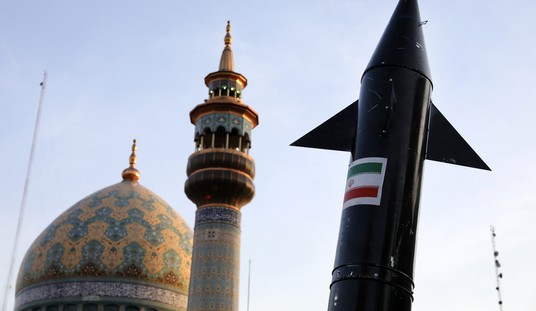During my company’s eight-year run as an operator in the Gulf of Mexico, we found and produced about one day’s worth of U.S. natural gas consumption and a few hours worth of oil production. That may not sound like much, but the economic activity of independent oil and gas companies sustains much of the Gulf Coast region and provides thousands of jobs.
All that is over. We’re plugging our last properties and leaving for good.
That sounds kind of bleak. Actually, we’re doing quite well, future prospects are great and nobody’s job is threatened. I thought it might be instructive to look at how we got here, and what we learned along the way.
It was December 2003 when we started drilling our first well on the Shelf, the shallow waters of the Gulf. It wasn’t our first rodeo, as most of us had worked on Gulf projects most of our careers. We had taken on some pretty big projects in South Louisiana, in state jurisdiction. We had also invested as a non-operating partner in several ventures on the Shelf.
We had an active 2004. We drilled about 12 wells as operator that year, and were one of the biggest customers of ADTI, the leading “turnkey” driller in the Gulf at the time.
2005 was the year of the hurricane. Everyone remembers Katrina. Before Katrina, Ivan also wreaked havoc. Rita did more damage in the Western Gulf and in the coastal parishes of South Louisiana. Between the three storms, over 100 structures toppled with minimal spillage of oil. Fortunately, none of ours were knocked down, only damaged.
We hit our “big lick” in 2007. Our team figured out how to access some gas reservoirs that had been identified beneath an old field. We set a new platform, a first for us, and when the field came on production it was making 95 million cubic feet of gas and 2,000 barrels of condensate per day. For a few months of 2008, our lease was the #1 producing lease on the Shelf. Even though the investment on this project ran into big 8-figure numbers (including our partners’ investment), the investment paid out in a few short months.
Oil prices were to spike to $145/barrel on July 2, 2008. I remember the day prices peaked because that’s the same day my company’s owner appeared on CNBC’s Squawk Box. If you’re not a superstitious person, give the oil business a try.
Then Hurricane Ike hit in September 2008. Our company had zero revenue for the last four months of 2008. Later, we came to learn that a jackup drilling rig was blown off location 100 miles to the east. It came to rest in shallower waters near our platforms, but not after severing the 42-inch gas trunkline that transmits most of the Western Gulf’s production to shore.
The economic collapse of 2008 reverberated through the oil patch. Oil prices collapsed from $145 to $36 per barrel; natural gas likewise fell from $13 to less than $3 per mcf. Just as the cash flow spigot was drying up, there was another whammy: some (other) operators had made contractual commitments during the heady times that they could not walk away from. Like dominoes, their vendors and partners were caught with a ton of receivables and little more than a handshake to assure that they would ever be made good.
2009: The shale gas boom started depressing natural gas prices. The problem was that natural gas development depends on exactly the same people and equipment as does oil.
One bit of good news: the new Obama Administration didn’t seem to care that much about oil and gas. The focus was on Green Jobs and Offshore Wind, and that focus was reflected in the resumes of the political appointees to the old Minerals Management Service (MMS): nearly all environmental lawyers with no oil and gas background.
We drilled our last well as operator in early 2010, a dry hole targeting oil.
April 2010: the Deepwater Horizon disaster. Eleven men lost their lives in the explosion. Millions of barrels of oil were spilled, and an environmental calamity was predicted.
What followed was a bureaucratic overreaction of unprecedented proportions. At a loss as how to respond, President Obama and Ken “Boot on the Neck” Salazar turned to former prosecutor Michael Bromwich, who responded complex engineering issues just as you would expect a prosecutor would: focus on the assignment of blame.
I’ve written diary upon diary about the disastrous Moratorium/Permitorium and the crazy regulatory response, most of which was misdirected at a problem other than the one BP faced. BOP testing and well capping was a problem that certainly needed to be addressed, but much of the other stuff has served only to grind permitting to a halt.
Consider this: Twelve lives were lost in two offshore helicopter incidents in the year (more or less) leading up to Macondo — I bet you didn’t hear about those. One bird went down in icing conditions, apparently pilot error. In the other, a large chopper went down not long after take-off due to an unlucky encounter with a red-tailed hawk. Seven families lost daddies, brothers and sons in that one.
We didn’t stop flying helicopters. Everyone knows that flying in helicopters involves risks; in fact, the trip from shore to job is probably the single most dangerous act an offshore worker faces. Oil and gas drilling and production are inherently risky, too, involving heavy lifts and pressures in a hostile environment. We can mitigate and manage risks, but the activity can’t be made perfectly safe. (The industry is actually one of the safest around.)
We participated in our last well as non-operator in late summer 2010. We were lucky to secure regulatory permission to produce the well, even after we had already invested the money to drill and complete it. The regulatory process had already stiffened by that time.
Since 2010, we’ve had to face the realities of a new world. Gas prices are still too low to justify most prospects; at a historic price disadvantage to oil, the stuff is nearly impossible to develop at a profit. A new election may bring a Republican to the White House, but the regulatory initiatives of the Obama Administration will be difficult to undo. There’s a certain matter of regulatory inertia, you see. Congress has yet to address the matter of Oil Spill Financial Responsibility (OSFR). The Oil Pollution Act of 1990 (post-Valdez) capped economic damages due to a spill at $35 million (lost in the Macondo shuffle was the fact that an operator has always been 100% liable for spill cleanup, with no cap). Uncertainty surrounding OSFR reform and future bonding requirements makes it difficult to make new investments.
In the end, there were greener pastures. We had concluded pre-Macondo that the search for gas on the Shelf was a losing game. Our crack staff of geoscientists (I use that term endearingly) had refocused their search on oil, back in our old stomping grounds of (mostly) South Louisiana. There we are subject to the regualtion of the LA Department of Natural Resources, not the Feds. Royalties are payable to the state or to private landowners, and the state gets severance tax payments as well. In 2011, we drilled six wells, including four nice oil wells and two dry holes.
Oh, well. You gotta break some eggs…
So we sold four offshore operated platforms in late 2011. Three others proved uneconomic to operate at current gas prices and are in the process of being removed. At this point, the wells have all been plugged and the structures await removal. Ironically, we are currently awaiting a permit for removal of our largest platform. I hope we get it in time to have it removed before winter.
Let me be quite clear: this was a blessing in disguise. We still own interests in offshore properties that are operated by other companies. And we had a great 2011 when we came back onshore. But there are other companies who won’t make the transition as easily — ATP for one just declared bankruptcy, and they explicitly blame the moratorium.
It has become much harder for a small company to operate in the Gulf of Mexico. It’s ironic, because Macondo was a big company deepwater oil fiasco that bears little relation to the type of operation we ran. Most of the action these days is in the deepwater, which is predominately oil-prone. The big players there have deep pockets and can bear the overhead of the Diana Moon Glampers regulatory approach. (That’s a literary reference, there.)
My bitterness toward the Obama Administration is difficult to hide. From day one, they showed no interest in knowledgeable oil and gas energy input on policy. Carol Browner was the first Energy and Climate Czar. Ms. Browner was knee-deep in Macondo’s regulatory overkill. Her replacement is Heather Zichal, but the job has been downgraded to Deputy Assistant to the President, Office of Energy and Climate Change. Ms. Zichal’s college internship was with the Sierra Club, which I hold in high contempt. Since graduation from Rutgers, she has worked for a succession of Democratic Congressmen from New Jersey, and then Sen. John Kerry (D-MA, “…the guy that should have been President…”) before snagging this White House gig.
Zichal, Salazar and Obama do not know and do not care that my companies and dozens like it exist. From Obama’s remarks on energy back in March:
The current members of the Flat Earth Society in Congress — (laughter) — they would rather see us continue to provide $4 billion — $4 billion — in tax subsidies, tax giveaways, to the oil companies — $4 billion to an industry that is making record profits. Every time you fill up the pump, they’re making money. They are doing just fine. They’re not having any problems.
It’s been fun, it’s been trying, it’s been nerve-wracking at times. As my boss has commented on several occasions, this is the first time in our careers that we have felt that we had an active adversary in the White House.
This is not an “Oh, poor me” story. It’s mainly a tale of how we need to stay flexible in this life. My company did, and we’re much better off for it. A government that you grow to depend on is a government that can crush you in an instant. And because of their size, they’ll never know or care when it happens.
Cross-posted at Maley’s Energy Blog.













Join the conversation as a VIP Member